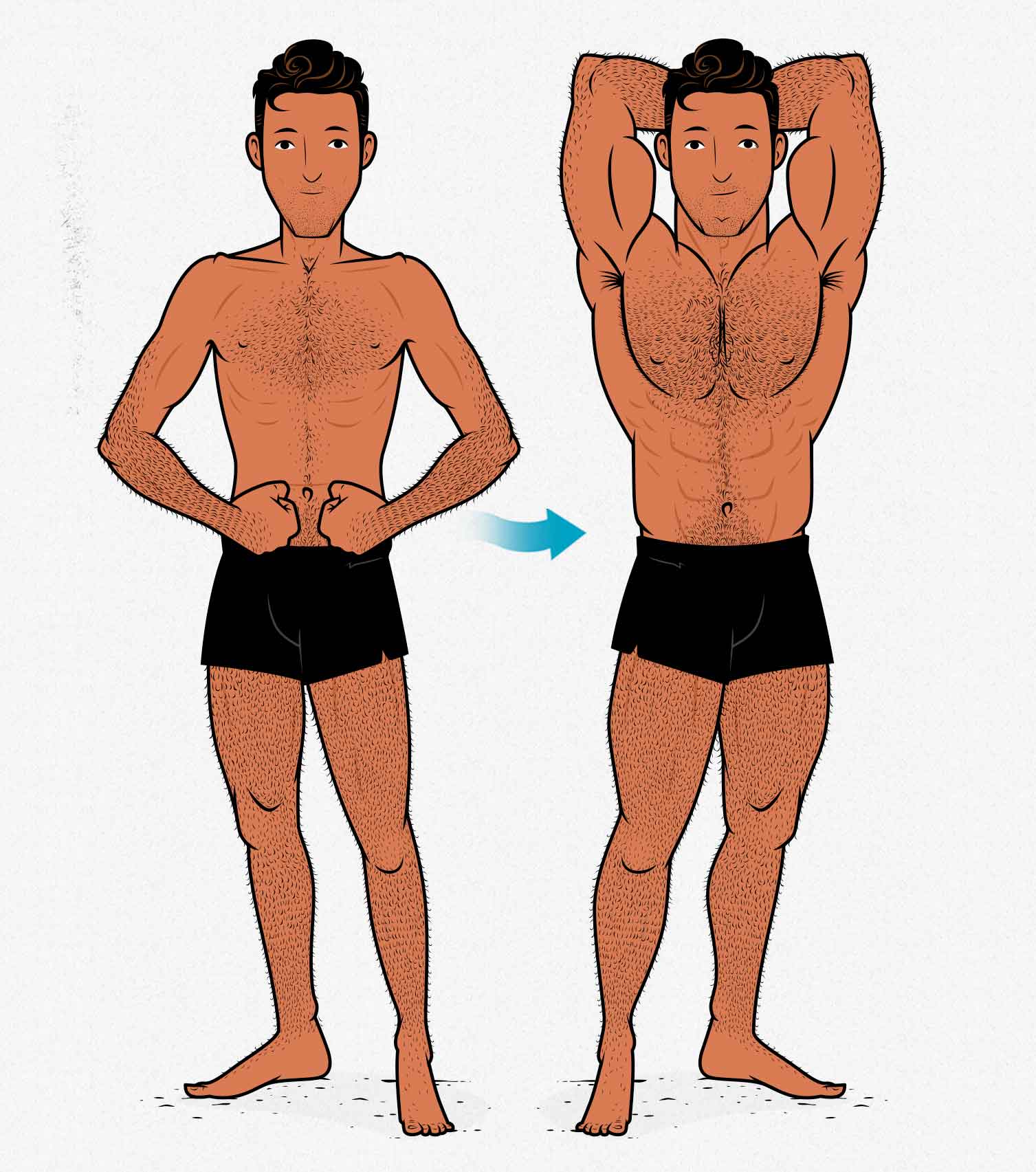
Is the 3/7 Method Good for Building Muscle?
A 2019 paper by Stragier and colleagues found that the 3/7 method stimulated more muscle growth than performing regular “straight” sets (study). They concluded that this new set/rep scheme was better than the conventional approach. But the paper has a major flaw.

I first heard about this study in the community for the Monthly Applications in Strength Sport (MASS) research review, run by Greg Nuckols, Eric Trexler, Eric Helms, and Mike Zourdos—some of the top strength and hypertrophy experts. One of the other members was curious about this new study.
The researchers had one group do straight sets with 70% of their 1-rep max. Most people can do around 12–15 reps with 70% of their 1-rep max, but the researchers cut them off at 6 reps. That means they were stopping 6–9 reps shy of failure. The sets weren’t being brought close enough to failure to stimulate muscle growth. Those are warm-up sets.
The other group used the same load—70% of their 1-rep max—but they used the 3/7 method, which looks like this:
- 3 reps, rest 15 seconds.
- 4 reps, rest 15 seconds.
- 5 reps, rest 15 seconds.
- 6 reps, rest 15 seconds.
- 7 reps, rest 2.5 minutes.
- Do it all again one more time.
It starts off super easy. 3 reps with your 12-rep max is a walk on the beach. But with short rest times like that, your muscles won’t have time to fully recover. By the time you get to the end of the set, you’ll be working pretty hard—hard enough to challenge your muscles. It’s a weird way of bringing your muscles close enough to failure, but at least it’s hard enough to stimulate muscle growth.
That’s what I wrote in MASS:

Greg Nuckols, who runs the research review, agreed:

No big deal, right? A lot of weird studies get published. I’m not sure where this 3/7 idea came from, but it’s cool that it’s being studied, even if the findings aren’t really applicable to hypertrophy training. At least not yet, anyway. Maybe something will be learned from it later.
But for some reason, this study blew up. We started getting questions about it in our own member community. I started seeing it being hyped up in YouTube videos. I’m not sure why. As far as I know, it’s not a method that anyone actually uses. And with good reason. It’s probably not very effective when compared to properly programmed conventional training.
We always need to be skeptical of weird results from a single new study. Not every study is perfect, as this one shows. Plus, some studies have fluke findings. A rare few are even fraudulent. That’s why it’s usually better to wait until there’s a robust amount of evidence before adopting a new intervention. That isn’t to say you should never experiment. This new training method isn’t dangerous or anything. But in looking for the cutting edge, you can blunt the effectiveness of your workout program.
So, if you want to build muscle, you should probably lift the normal way. Here’s how to do it:
- Push yourself hard enough on every set. Lift close enough to failure. On bigger compound lifts, that usually means stopping 1–3 reps shy of failure. On smaller isolation lifts, that often means stopping 0–1 rep shy of failure, especially on your final sets.
- Do 3–5 sets per exercise. Do 1–2 exercises per muscle group. That should be enough to maximize muscle growth for any given muscle. For more, here’s our article on training volume.
- Train each muscle 2–3 times per week. For more, here’s our article on training frequency.
- Do 6–20 reps per exercise. Doing 6–10 reps tends to work better on big compound lifts (like squats and deadlifts). Doing 8–15 reps tends to work better on smaller isolation lifts (like biceps curls and triceps extensions). Doing 15-20 reps tends to work well on very small isolation lifts (like lateral raises and neck curls). For more, here’s our article on the so-called “hypertrophy rep range.”
- If you want to save time, try supersets, giant sets, or drop sets. All of these techniques actually work. They’re incredibly effective ways of finishing your workouts twice as quickly—and without sacrificing any muscle growth.
To summarize: no, the 3/7 method isn’t an effective way to stimulate muscle growth. It stimulates more muscle growth than doing warm-up sets, but there’s no reason to think it’s better than conventional hypertrophy training.
Anyway, if you want more muscle-building information, we have a free bulking newsletter for skinny guys. If you want a full foundational bulking program, including a 5-month full-body workout routine, diet guide, recipe book, and online coaching, check out our Bony to Beastly Bulking Program. Or, if you want a customizable intermediate bulking program, check out our Outlift Program.


Muscle-Building Mini-Course via EMAIL
Sign up for our 5-part muscle-building mini-course that covers everything you need to know about:
Here are some related articles